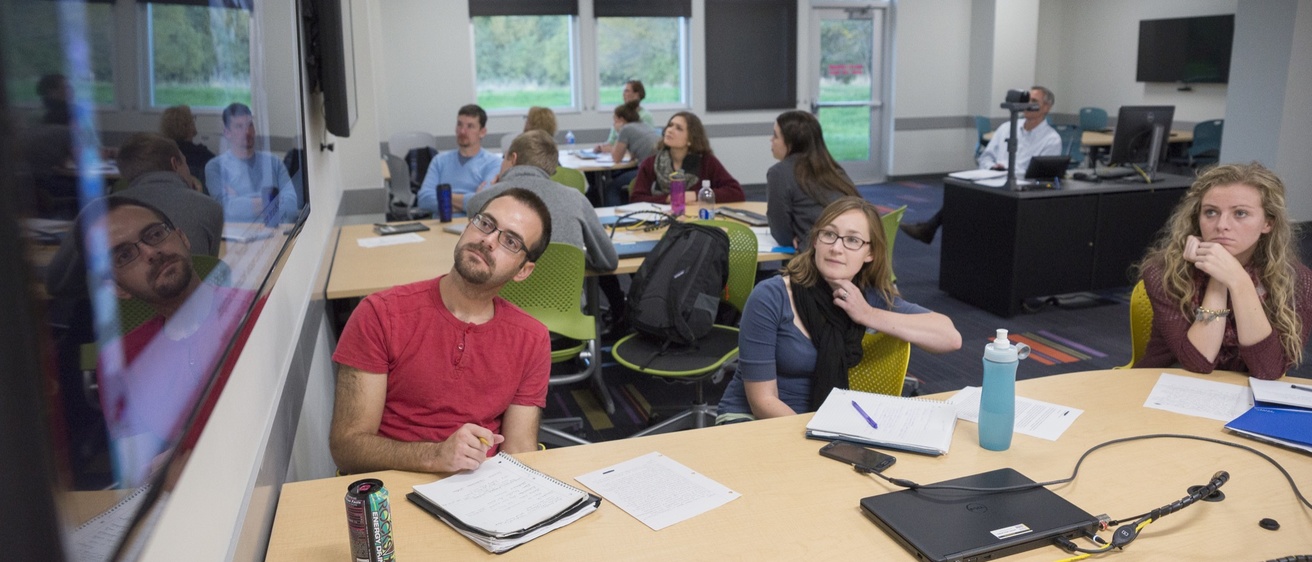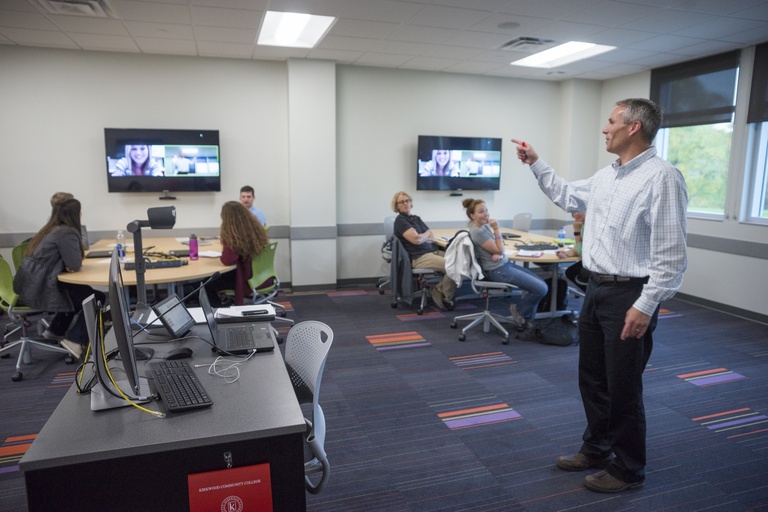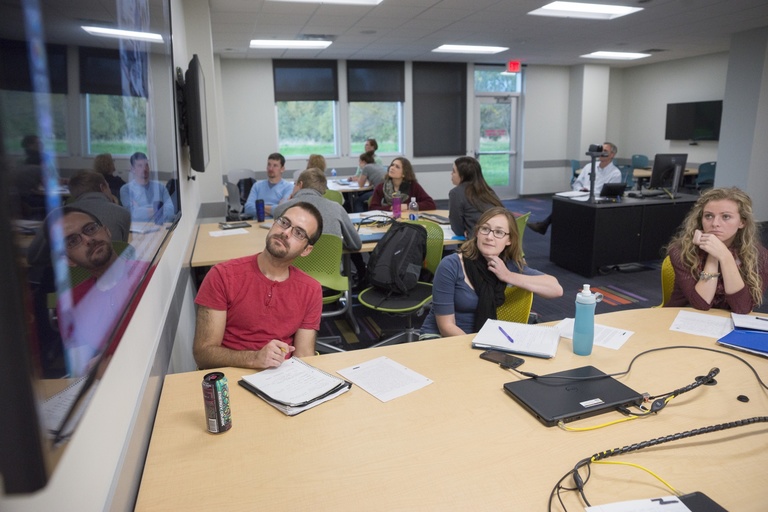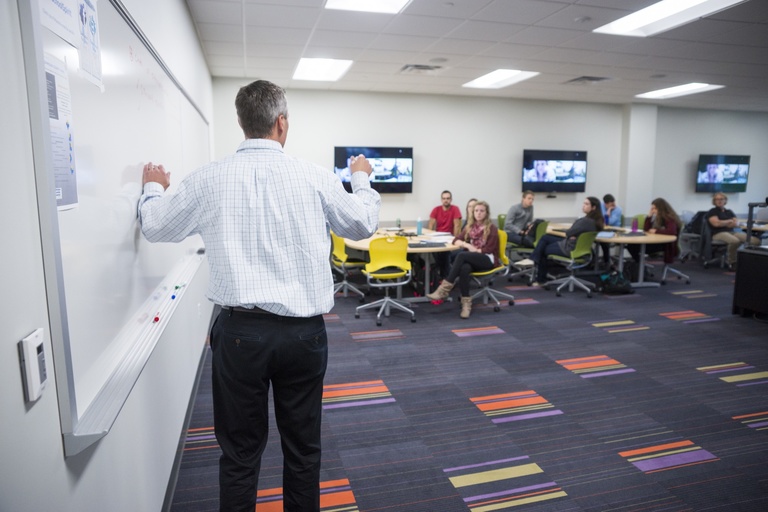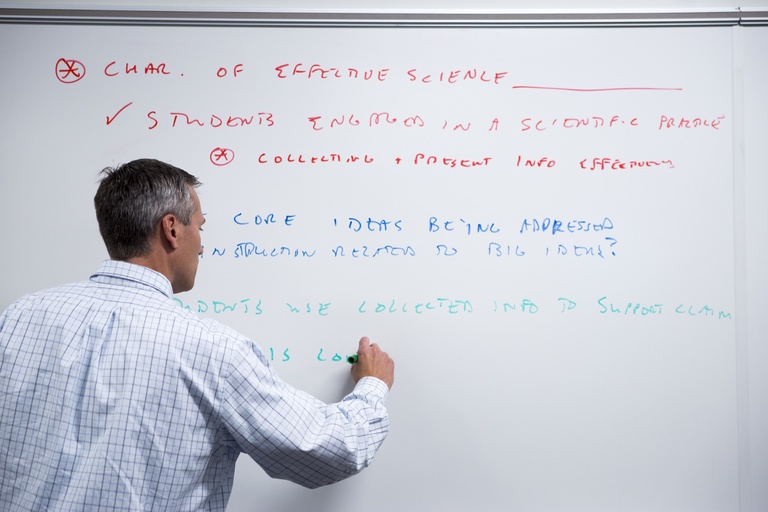“How does technology enhance science discovery in a way that wasn't possible without technology? Why is it better for me to use that probe to collect temperature than for me to just keep looking at a thermometer?” asks Mark McDermott, associate professor of science education at the University of Iowa, in a conversation during Instructional Issues in Teaching Science (EDTL:4753), a secondary education course offered at the new Kirkwood Regional Center.
Sometimes for better and sometimes for worse, technology is now inseparable from teaching. The question is how to integrate it, not whether to integrate it.
“Students these days are very attached to technology. They have grown up with it being part of their everyday lives," says Sophia Klingenberger, a student in the course who is working toward an M.A.T. in science education. "It is not enough to simply lecture to students."
Klingenberger says that the most important takeaway from this course has been to make instruction as hands-on as possible. "When students are engaged with their hands and are able to manipulate objects in the lab, it gives them a better idea of how that object actually works," she adds.
For some labs, technology allows science educators to have students manipulate certain objects in a way that would be either impossible or impractical in the classroom. “One application for computers and iPads is a program where you can remove the organs from the body and rotate them 360 degrees so you can better understand them,” Klingenberger says. Other programs allow students to explore molecular structures and cells.
Technology also provides the opportunity to bring practicing experts from all over the world into the classroom.
McDermott initiated a video conference with Laura Wood-Fernandez, who went through the UI M.A.T. in Science Education program and is now a middle school science teacher at Mount Pleasant Community Schools, in which she could share her classroom strategies and discuss their effectiveness with McDermott's class of future educators. He hopes that by modeling effective integration of technology in his own class, he will inspire future educators to imagine ways of using technology in their classrooms.
Of the experience, science education student Taylor Schlicher says, “Many times in class, we will discuss ways to go about teaching science but won’t necessarily get to test our ideas. Observing Laura’s science class was a way to address this.” Schlicher said that the experience was validating because Wood’s class showed the effectiveness of the science teaching ideas being discussed.
The course's ultimate goal is to help educators keep all students engaged in science and develop true science literacy.
